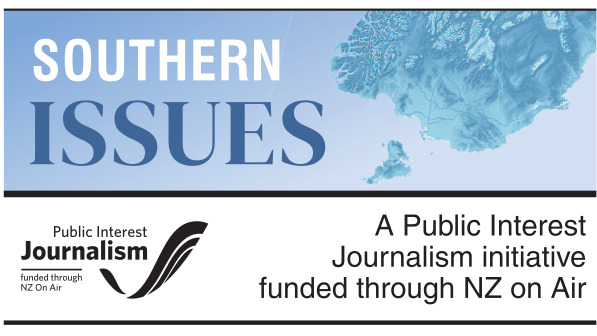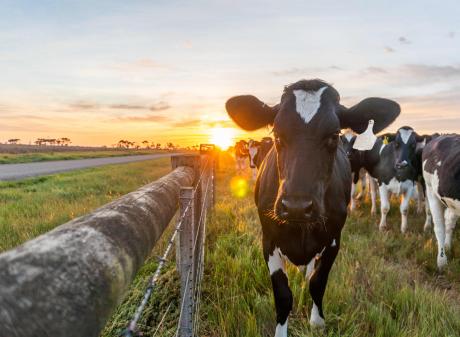
|Is it a bird? Is it a plane? Let’s hope it’s not a skein of geese hitting a passenger aircraft. Mary Williams reports on the increasing risk of geese to farms, waterways and aviation - and rising voices for national action to stop them.
Farmers and hunters say the geese problem is out of control, costing a fortune and putting livelihoods - and lives - at risk.
Without a New Zealand-wide strategy, it is only a matter of time before a flock brings down a plane as famously happened in New York in 2009, they say.
In the meantime, farmers are left paying the price of ineffectual local culls, ruined paddocks and hungry animals.
Federated Farmers chief adviser Gavin Forrest told the ODT: "Geese numbers are exploding. There needs to be a national pest strategy specifically for them. Pest control funding is tight but the longer it goes on, the worse the problem will become, and the more it will cost New Zealand. We all need to come together with our shared environmental, safety and economic goals to identify the best way to control and potentially eliminate geese. We need to keep pressure on politicians to grab this issue by the wings."
Mr Forrest points to the Ministry for Primary Industries’ (MPI) wallaby eradication strategy, launched last year: "If we can work to eradicate wallabies, we can work to eradicate geese - particularly because they can bring down planes. Wallabies don’t jump that high."

The threat to our skies, however, is the stuff of nightmares. Because geese are so huge and often fly in a V-shape, there is a risk of "simultaneous bird strike" to a plane’s engines and cockpit, with devastating effect. This famously happened in New York when flight number 1549 was hit by geese after take-off, with 155 people on board. A disaster was averted due to the ex-fighter pilot’s extraordinary landing on the Hudson river. Another experienced long-haul pilot, who wished to remain anonymous, told the ODT measures such as bird culls around airports and strengthening of aeroplanes still "hasn’t solved the problem if a big flock of large birds hits a plane".
Called "cobra chickens" in Canada due to their hiss, Canada geese were imported to New Zealand for hunting in 1905. Greylag geese, originally from Europe, are escaped domestic geese. Both breeds are a hissing, honking problem. Uncategorised as either game bird or pest, their management falls to landowners and concerned councils, with no national strategic management plan.
There is hope, however, that their goose will be cooked. A goose-control stakeholder group is meeting this month, convened by the MPI. Biosecurity New Zealand will be presenting information it has collected about the problem. Members of the group include regional councils, the Department of Conservation (Doc) and key interest groups including Federated Farmers, Fish & Game and Te Tira Whakamataki.
John Sanson, Biosecurity New Zealand’s manager of pest management told the ODT managing the bird had proved "difficult - and socially acceptable control tools are limited". When the group first came together last October it had agreed that there was a need, firstly, for information about the problem and management techniques, including by airports; which hopefully would then lead to an improvement in "our effectiveness in controlling".
Mr Sanson says there is "no current consideration" of a national management plan for geese. However, among Federated Farmers and others, there is growing consensus there should be.

Cut-out silhouettes of coyotes, the North American dog, now adorn their paddocks. Mr Dundass said: "I heard about them being used on a golf course in Christchurch and got hold of one - they are proving a deterrent."
Mr and Mrs Dundass know that pushing geese back up into the sky doesn’t solve the problem. They also contribute money for local culls - the geese are shot from helicopters. The "control tools" referred to by Biosecurity New Zealand also include more up-close, gory methods. When geese lose their flight feathers for a few weeks in the summer they can, if found, be shot from the ground, hit over the head and decapitated, or given a lethal injection. However, they may not be found. Farmers agree they are "canny" and move around. Recreational hunting can help only a little - the numbers are just too big.
The Tiaki Maniototo project, which is working to improve freshwater quality and biodiversity, has been co-ordinating culls involving Glen Ayr Station. Project manager Morgan Trotter says the project has spent about $35,000 on culling over the past year - and 29 affected landowners have contributed an additional $28,000. However, he said: "It is scary how quickly geese breed and return."
Mr Dundass estimates that his farm’s contribution to the culls, plus the cost of lost crops and bailage to replace lost grazing land, adds up to at least $15,000 a year. "We need help," he says.
Some councils have participated in culls. However, the Otago Regional Council (ORC) says that after consultation it has "no rules" in its pest management plan (2019-29) requiring geese control. It has, however, identified geese as "organisms of interest" and says it is aware of the problem, including for aviation as well as farms.

Heading west and south, geese are enjoying our national parks. Glenorchy-based hunting and fishing guide Ethan Clark has seen them in gaggles of a thousand in Mt Aspiring’s Dart Valley. Mr Clark holds a licence to sell wild game but can’t see a market for geese. He adds his voice to the throng: "They are a nuisance - we need a national strategy."
John Lucas, Te Anau operations manager for Department of Conservation, admits: "While Doc does not have a role in managing the species, we have identified that targeted control at specific sites may be needed." He agrees geese congregate in wetlands and lakes during moulting. Doc has partnered with landowners and Fish & Game to undertake culls, most recently near Te Anau. He adds, however, that Doc needs to prioritise, and predators such as stoats are higher up the list to manage.
There used to be co-ordinated goose management. Prior to 2011, Fish & Game had responsibility for monitoring and culling geese. In 2011, for reasons including damage to farms and risk to plane safety, geese categorisation changed - from game bird to unprotected bird. This means geese can be shot in any number, without a game licence. However, national monitoring and management ended. Goose control became neither the responsibility of Fish & Game nor the Department of Conservation. Farms and airports have had to deal with the problem locally.
If geese could talk, they probably would have said: "That won’t work - we go where we want. Honk honk."
Mr Hadland believes goose management his organisation provided before 2011 was appropriate, but increasingly challenging within resources. Expansion of farmland in Otago has meant geese have more food to fuel breeding, he suggests. He adds: "Fish & Game, however, was a careful, responsible manager of geese to the best of our ability - that arrangement should have remained."

Simon Williamson is a former chairman of Federated Farmers High Country and a farmer at Glenbrook Station in the Mackenzie Basin. He has taken part in geese culls with Christchurch Airport in the past. He says national geese management should be "taken out the too-hard basket. It is a matter of when, not if, there will be a plane disaster. There have been close calls."
The chance of death and injury, if a plane is hit by a wedge of geese, is high. The chance of it occurring - usually shortly after take-off or when coming in to land - is dependent on geese numbers and where they fly. Airports try to mitigate "bird strike" through wildlife management plans. Mike Weir, Christchurch airport wildlife manager, says geese are a high-risk species "off airport".
The airport has helped fund local culls of about 1200 geese a year and Mr Weir monitors geese flight paths, which he considers are far enough away from plane flight paths. Christchurch Airport is listed by the Civil Aviation Authority (CAA) as "low risk" for bird strike.
Across New Zealand, however, bird strikes have risen since 2020. There are about five strikes per 10,000 plane movements, and nearly three times as many near strikes. Next to a bird-friendly estuary, Invercargill Airport is listed as "medium risk" at present, with bird strikes on the rise. The CAA ranks Dunedin and Queenstown Airports as low risk at present. A spokesman for Dunedin Airport said: "If this situation was to change, appropriate steps would be taken".
The risk in the sky is real - and the damage to farms continues. Susie Elliot, at Lammermoor Station, near Glen Ayr Station, describes the situation as "heartbreaking. Taking the job of culling away from Fish & Game has done no favours to farmers. When I hear the symphony of geese honking in the sky my heart sinks and I wonder which paddock they have destroyed, that has just cost thousands of dollars to plant."










